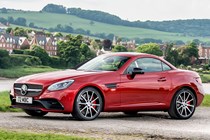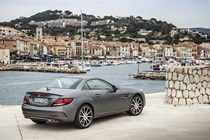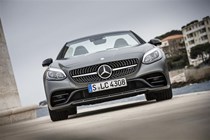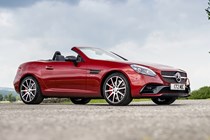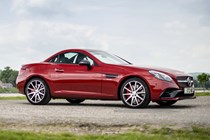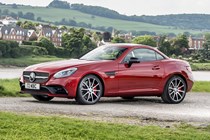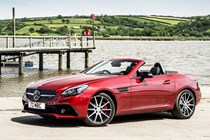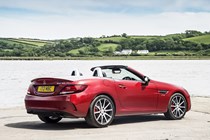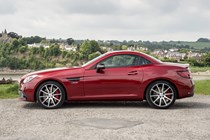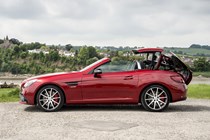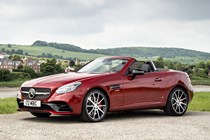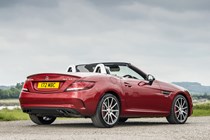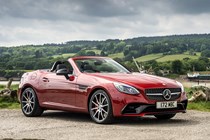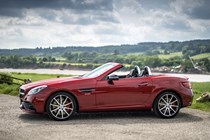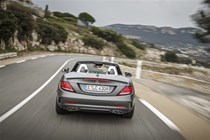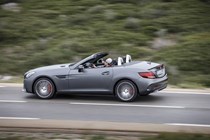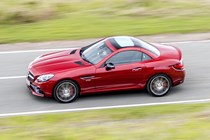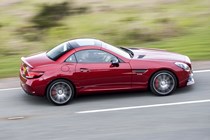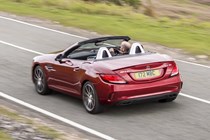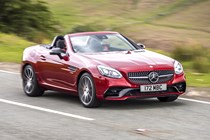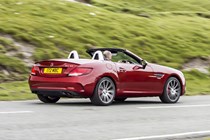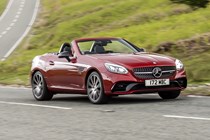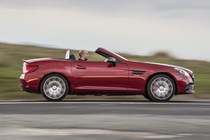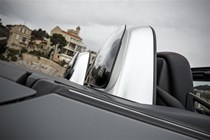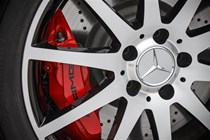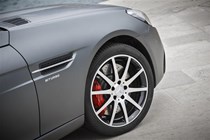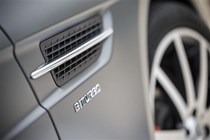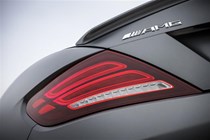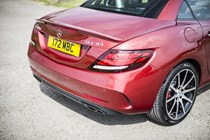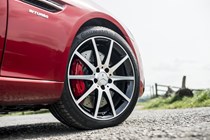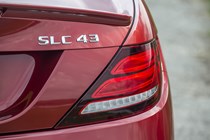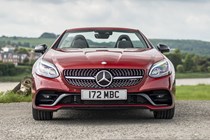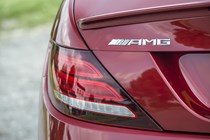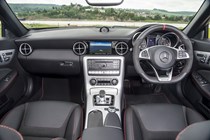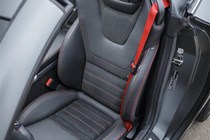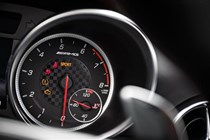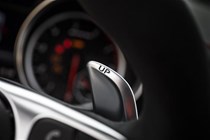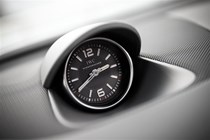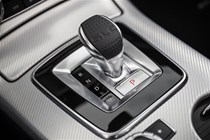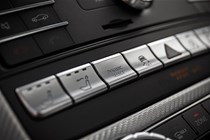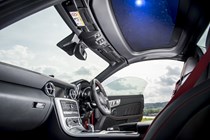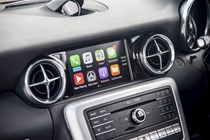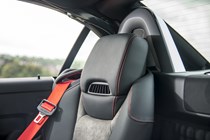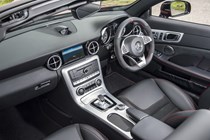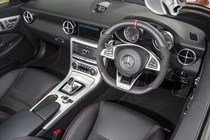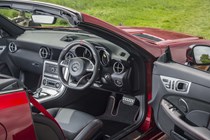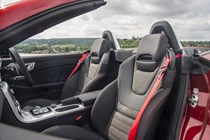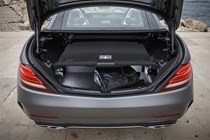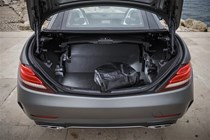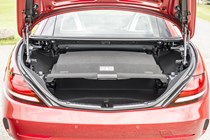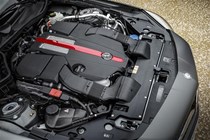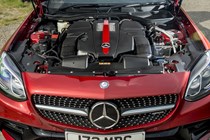
Mercedes-Benz SLC-Class AMG (2016-2018) engines, drive and performance
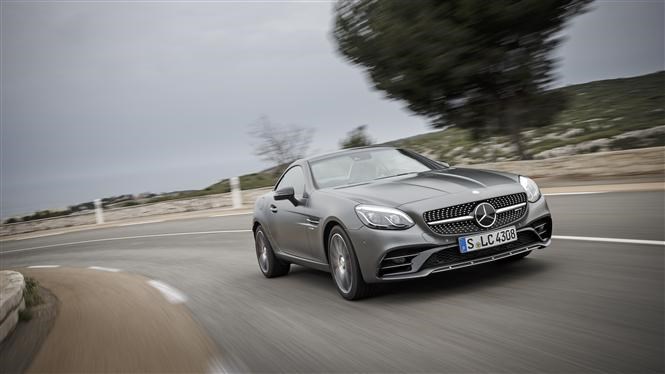
There’s not a lot of choice here – just one engine – but what the AMG lacks in diversity it certainly makes up for in terms of straight-line speed and soundtrack.
Petrol engine
Eschewing the old car’s 5.5-litre, V8 sledgehammer is a smaller 3-litre V6 motor. It does have two turbochargers though, boosting output to 367bhp, but that’s still about 50bhp less than before.
Still, this translates to a 4.7 second 0-62mph time, only a tenth slower than the old car. Plus it sits in a cheaper VED tax band thanks to lower CO2 output and is more fuel efficient too. In fact at launch Mercedes-AMG claimed the SLC was the most efficient six-cylinder roadster on the market.
It’s a firecracker of an engine with plenty of power at all points in the rev range, and thanks to its two smoothly spooling turbochargers there’s no perceptible lag either. Peak torque is a muscular 520Nm and top speed is limited to 155mph. The throttle response is sharp and torque builds in a linear way until the redline too.
Most importantly of all, the hotrod soundtrack is still there, albeit with a more metallic V6 howl than the old car’s V8 burble. There’s a full spectrum noise assault from the exhaust, with a crescendo of noise under acceleration and fizzes and crackles between gearshifts.
You won’t be left wanting for drama with the roof or windows down, but the actual engine sound from the front end of the car is slightly muted by those turbos when you’re driving with the top up.
Automatic transmission is standard
Traditional driving purists may lament the lack of manual ‘box but for the rest of us the 9G-Tronic auto, fitted as standard, is pretty fantastic.
Under normal running conditions its shifts are smooth and hard to discern but select Sport+ mode and things become much more thrilling. Do this and the changes feel lightning fast, with an uninterrupted surge of speed on full-throttle take offs.
You can take control of the gearbox using shift paddles behind the steering wheel too, after activating manual mode from a button next to the selector. This speeds up the changes further and also holds you in the selected gear instead of taking over at the limiter like some automatics.
We found the gearbox performed very well even when left in fully automatic mode, reacting quickly and predictably to braking and holding onto low gears throughout a long corner.
The SLC is largely based on the old SLK, which didn’t hold a candle in the handling stakes to its main rival, the Porsche 718 Boxster. What it did offer was an engine full of power and character, plus a raucous V8 soundtrack, to make up for those shortcomings.
Now there’s less power and an arguably less emotive noise, has the SLC 43 lost its edge? In truth it’s still not as dynamic an experience as the 718 Boxster – there’s no manual gearbox, the steering lacks feel and the traction control is very keen to interfere.
That said there’s still a lot of fun to be had from SLC thanks to sharp and direct steering, decent levels of grip and good body control.
Furthermore the Dynamic Select allows the driver to modifies the engine, transmission, steering and suspension settings between “Comfort”, “Sport”, “Sport+”, “Eco” and “Individual” modes by using a button on the centre console.
Chassis upgrades over the old car include newly developed front and rear axles and mounts and more precise steering. The optional Handling Package adds a mechanical limited-slip differential to the rear axle for improved traction and handling particularly on the exit of a corner.


